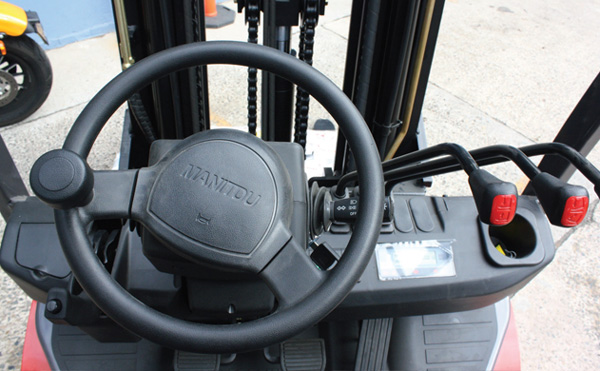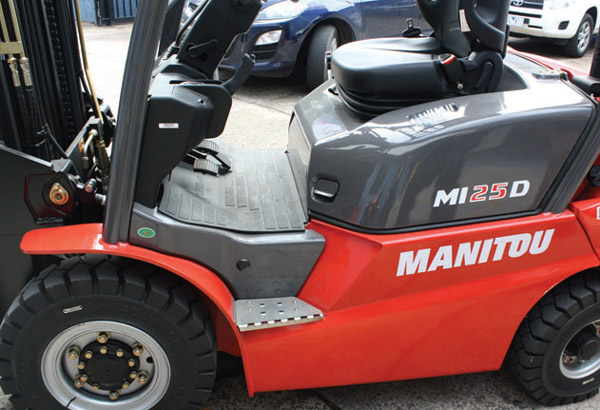Manitou’s MI range doesn’t break any records for innovation, but it will keep customers happy with a rugged, cost-effective counter-balance forklift option, Matt Wood reports
The Manitou MI 25 D is a no-nonsense counterbalance forklift that Manitou Australia claims has been designed for durability, ease of use and ease of servicing.
The MI range is interesting from the point of view that it encompasses capacities ranging from 1.5 tonnes to 3.5 tonnes.
I caught up with the new machine at Manitou’s Australian headquarters in the Sydney suburb of Alexandria to have a closer look at the MI range.
At first sight, the MI has the Manitou family look down pat. To be honest I was expecting the Chinese-manufactured forklift to look like a cheap imitation.
But the Hangcha factory that manufactures these machines has done a good job of producing a counterbalance machine that echoes the ‘backwards-tractor’ visual cues set by the rest of the range.
Really, the idea behind the MI in Australia is to augment the range of machines offered by its dealers. Given so many of these are located in regional areas, simplicity and robustness of design are going to be important virtues.
Climbing aboard the MI 25 D confirms this approach. The MI 25 D is the 2.5 tonne diesel version, and given the Manitou customer demographic in this country, I reckon it’s going to be a popular option.

Engine
The MI 25 D is available in a 3.3-litre Yanmar diesel engine or a 2.5-litre Nissan engine that runs petrol/LPG.
Cab and Controls
From the driver’s seat, the bells and whistles are limited, yet considerable effort appears to have gone into providing a machine that has ergonomic simplicity.
For a start there’s easy access from both sides of the machine and the seating position gives a commanding view of the surrounding area.
This is more apparent on the diesel model I drove as there was no LPG cylinder to obscure rear vision.
The control levers are positioned at the same height as the steering wheel and gave a balanced feel when driving and operating the hydraulic functions. There was no need to reach or lean towards any of the controls.

Performance
A whole gamut of mast options is available and the MI 25 D I drove was fitted with a standard three-stage mast with a centre-mounted ram.
The elevated seating position and wide aperture of the mast did mean that low level visibility was quite good.
My gut feeling, however, is that these machines are going to be more at home loading and unloading trucks and shuttling pallets around on a variety of hardstand surfaces than slotting pallets into racking in a warehouse.
The torquey little 3.3-litre Yanmar diesel engine proved punchy performance-wise and had no trouble keeping the hydraulics spinning with a load on the fork-tines; the official figure is 160 bar of hydraulic pressure.
If the gas version is your thing you can also opt for the 2.5-litre Nissan engine for petrol/LPG.
Under the bonnet, the Yanmar powerplant is a neat and simple installation and daily checks in terms of oil and coolant are easily reached.
The power-shift transmission also behaved predictably and kept with the theme of simplicity without trying to over-engineer itself.

Verdict
While the MI range doesn’t break any records for innovation, it does provide an extra opportunity for the Manitou dealer network to keep its customers happy with a rugged, simple and cost-effective counterbalance forklift option.
Specification
Make/model: Manitou MI 25 D
Lift capacity: 2,500kg
Lift height: 3.3m
Energy: Diesel
Engine: Yanmar
Engine power: 42.1kW
Transmission: Torque converter
Speed box: Powershift
Travel speed: 25km/h
Hydraulic: 69l/m / 160 bar
Length: 3.68m
Width: 1.03m
Height: 2.11m
Weight: 3,895kg

